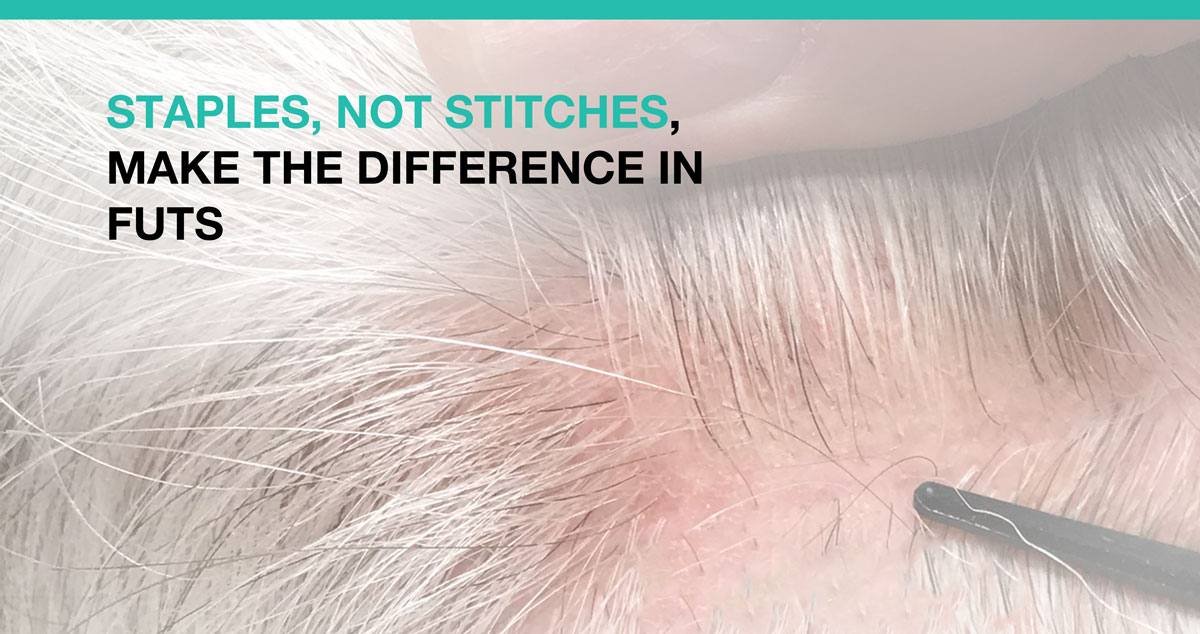
If you’ve ever undergone surgery, it may not surprise you to learn how commonplace staples have become.
What may surprise you is how superior they can be to sutures – more commonly known as stitches – even in a follicular unit transplantation (FUT).
You wouldn’t be human if you didn’t register a little discomfort to either option, at least initially. After all, fear of the unknown can cause jitters in even the most resolute person. But once you understand how staples can lead to a better outcome, any anxiety you feel may lead to an even greater sense of anticipation about this life-changing hair loss treatment procedure.
Staples are inherently stronger
Physicians use surgical staples to close incisions after many types of surgeries, especially those that result in large openings. (Think in terms of stomach surgeries and Cesarean sections.) The rationale is that staples are stronger than stitches, not to mention faster and easier for a physician to use.
Many stitches dissolve over time, as a wound heals, whereas staples must be removed. Understandably, this fact leads many people to assume that stitches are a better option.
Size up the advantages
These people are often quick to change their minds when staples are used in an FUT because:
- Staples minimize scarring.
- Staples ensure that the scalp heals faster.
These advantages result from the methodology itself: Staples are placed individually, and about ½ centimeter apart. This is important because the spacing allows blood and oxygen to flow freely to the wound, allowing a much finer scar to form.
By contrast, a running line of stitches can trap and damage hair follicles. And if the skin swells – as it often and normally does after a hair loss treatment – the trapped follicles often flounder.
Staples can result in other attractive outcomes, too, including:
- They do not leave the so-called “track marks” produced by stitches.
- They allow more natural hair to be preserved.
- They result in a richer, fuller look once the hair loss treatment is complete.
Staples are removed in phases
The word “complete” triggers a common question among people who seek an FUT: How long do the staples have to stay in place?
Unfortunately, there is no “one size fits all” answer to this question. This said, to ensure a wound heals as it should, it’s not uncommon for some staples to be removed seven to 10 days after the hair loss treatment. The remaining staples are dislodged about 10 days after that. Many patients view this schedule as ideal, especially if they find the staples to be slightly uncomfortable or “itchy.” The initial removal provides patients with the relief they need to power through the remaining days of their healing regimen.
Still, it helps to keep in mind that these are approximations. Every patient heals differently, which is another reason why people gravitate to the personalized attention they get from Dr. Joseph L. Williams at the Advanced Medical Hair Institute. As one of the premier hair restoration surgeons in the world, Dr. Williams has a surgical touch that is rivaled only by his human touch. You can find out for yourself – and take the first step in this transformative experience – when you schedule a consultation.










